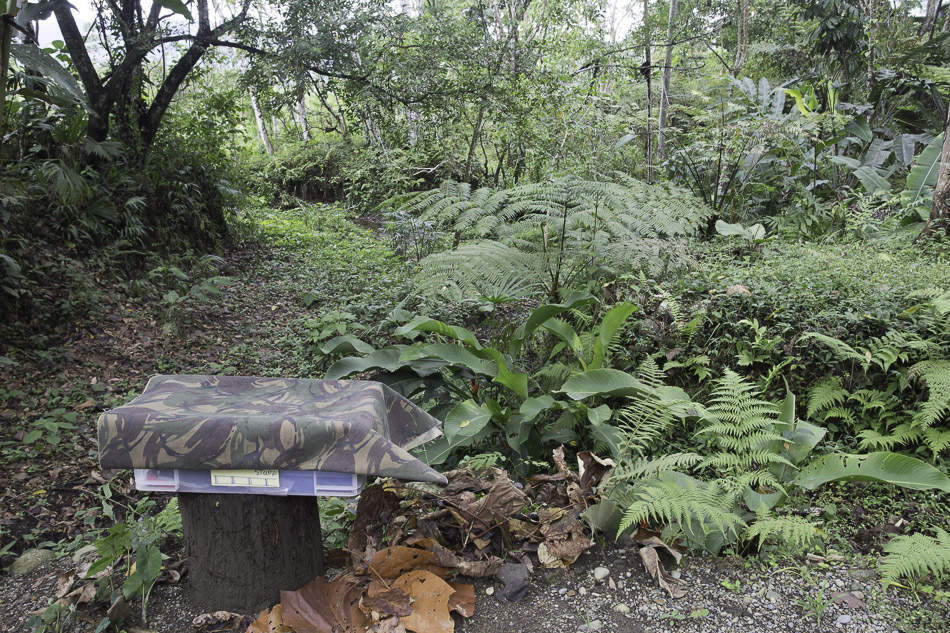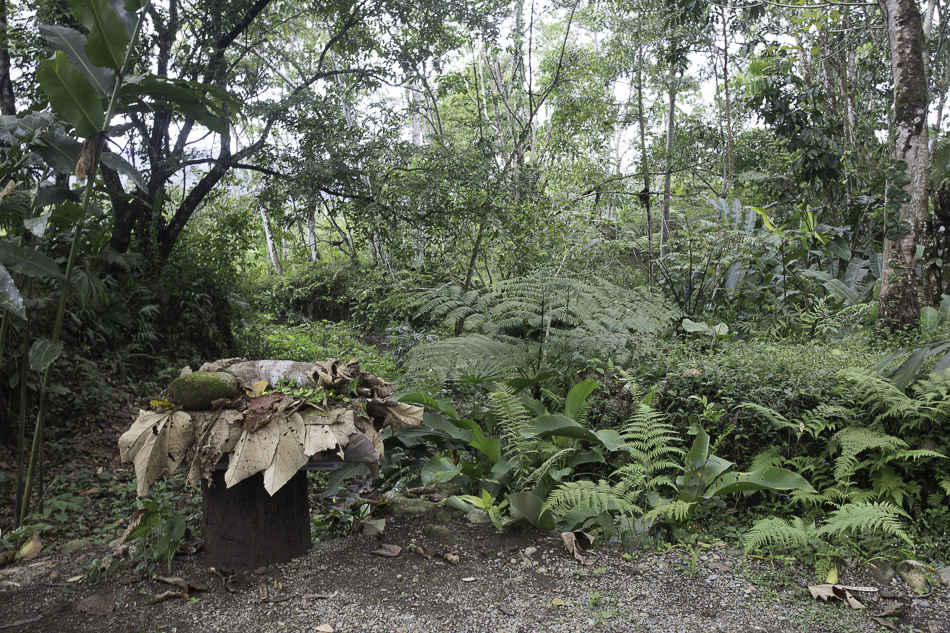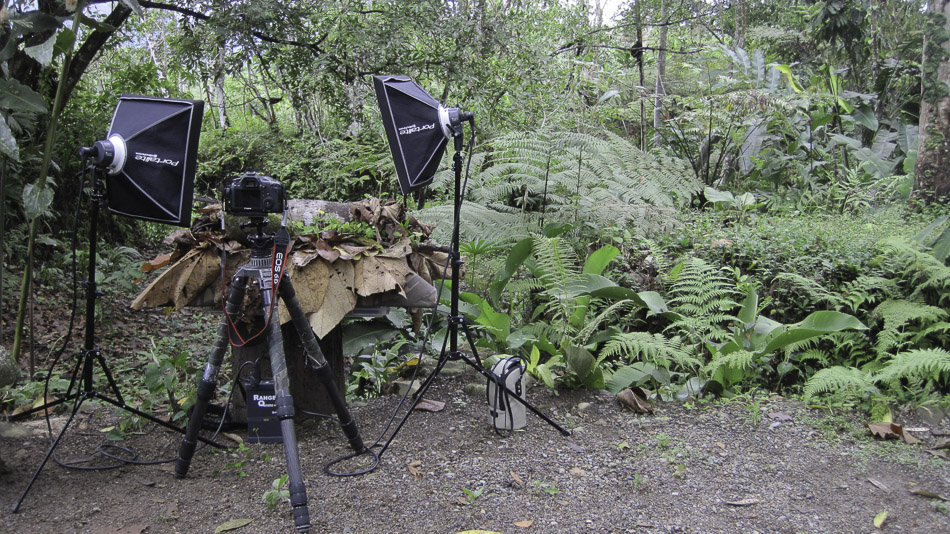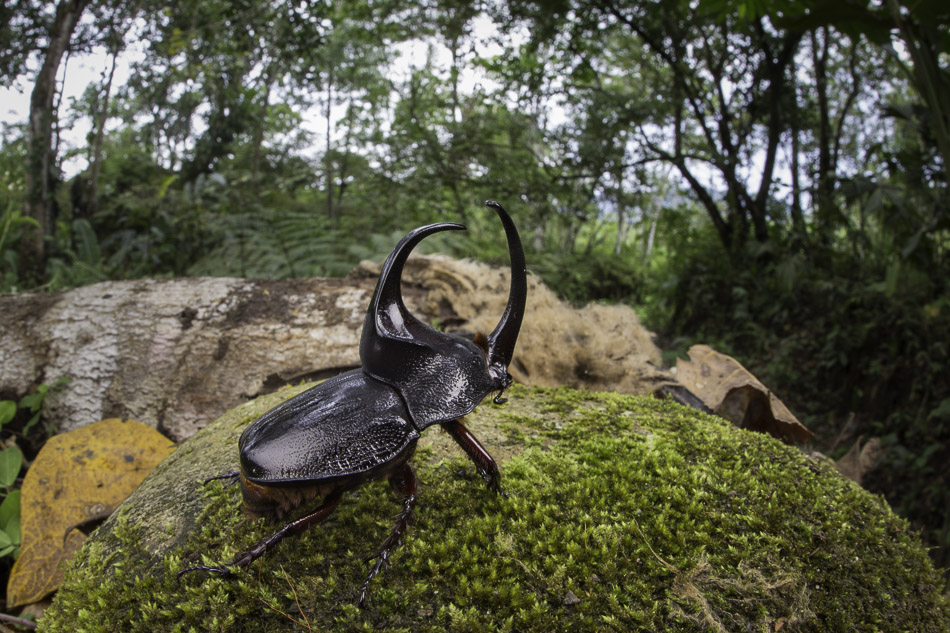If you want to do successful macro photography in the wild, think about having a field studio.
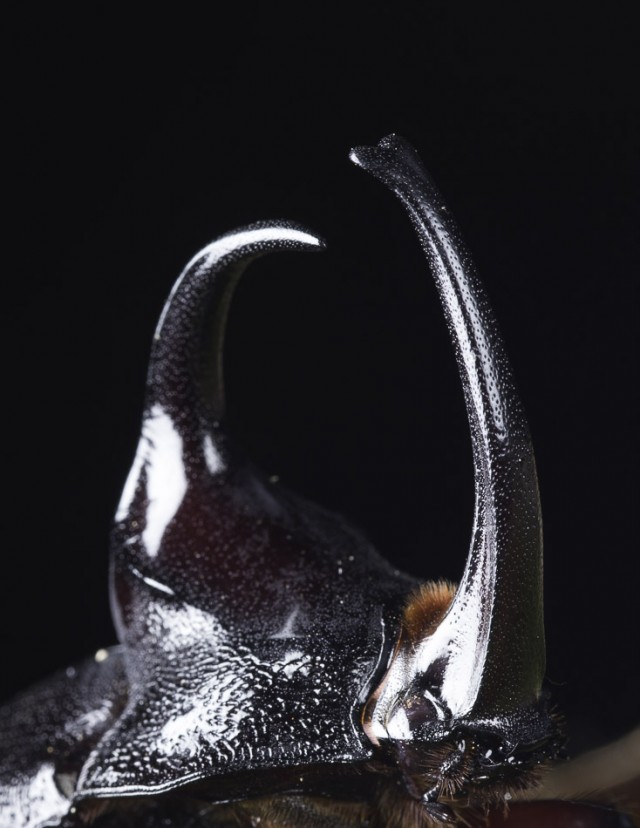
Paula and I were in the depths of the amazonian rain forest in Peru, when we found a Rhinoceros beetle near to our camp. The Rhinoceros beetle is an iconic tropical insect, a celebrity.
Celebrities need attention and we wanted to give as much of our photographic attention to this beetle as a wildlife photographer in East Africa would do for the impressive mammal after which it is named.
The difference with an insect this size, is that to a great extent you can contrive almost all the factors that might lead to achieving a great photograph.
The first thing we did was to carefully place the insect in a cool place, a fridge. This does the insect no harm at all, the insect relaxes and slows down.
We then prepared a place for the photographic session.
We wanted to have a photograph of the beetle in its natural rain forest habitat and it took us about an hour to find a suitable location. There, we built a little ‘stage’, celebrities like stages on which to strut. We used strong boxes, camouflaged mats as well as lots of natural material.
Paula and I have been in South America for over a year now, photographing and filming the wildlife. Our expedition into Peru was part of our ‘Living Wild in South America’ series, so we carry a lot of this equipment with us as routine.
We made the stage as natural looking as possible and then brought in the equipment. An Elinchrom Ranger ‘quadra’ system, comprising two lights and a Canon D6 camera on a gitzo tripod.
We took a series of test shots using a stone, moving it in various positions, looking at our results and tweeking the camera settings until we were happy.
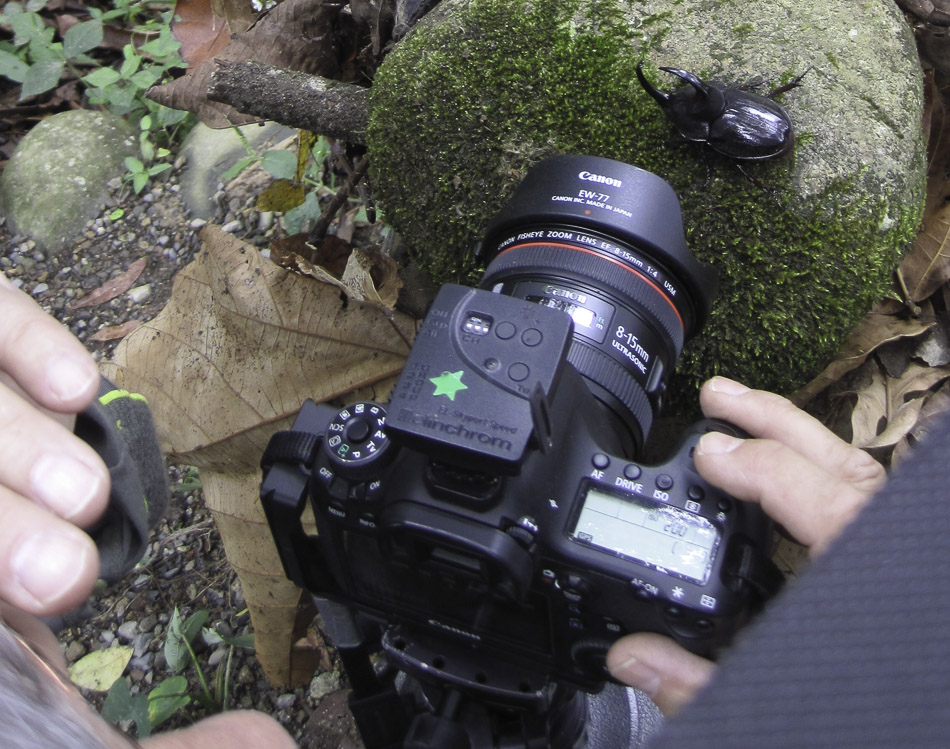
We wanted a variety of shots, so we used two lenses the Canon 180mm macro lens which I have had for six years and love, love, love, and a new Canon 8-15mm fish eye, which I have not used much, finding that it requires very special circumstances in which it is useful, perhaps this was to be one of those situations?
Then we introduced the beetle. At first it did not move. Minutes and minutes passed by. We could not take any images as the insects legs were tucked under its body giving it an unnatural appearance. We waited, ten minutes went by, we were getting apprehensive, then suddenly a movement, up came the legs and slowly the beetle started to move.
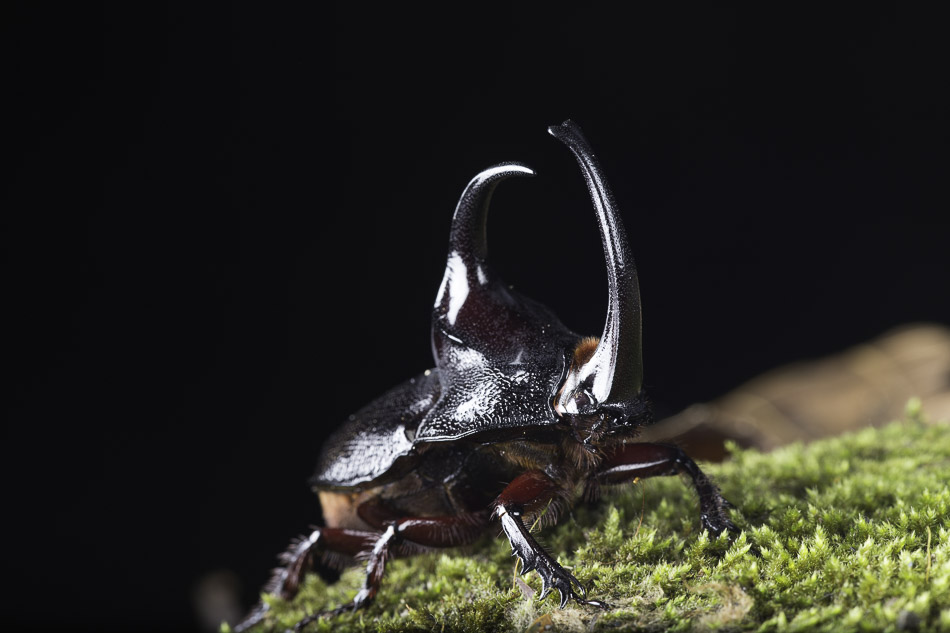
The first few seconds are vital, this is the best time for that great image. The camera shutter snaps, snaps and snaps again, there is no time to check the settings or position, the pre-planning is now paying off.
This was my favorite picture, the celebrity on her stage and in a perfect setting.
At over 30 degrees the insect became fully mobile and tricky to deal with so the kindest and most responsible thing was to take this denizen of the forest back to where we found it.
You do not need this amount of equipment, simple flash guns can be sufficient, especially used with reflectors. But we like the flexibility of the ‘quadra’ system and have used it for many types of ‘field’ situations.
If you are interested in macro photography we would recommend you to look at Alex Hydes’ work, his is some of the very best macro photography.

